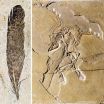Population boom, droughts contributed to collapse of ancient Assyrian Empire
Researchers draw parallels between decline of Assyrian civilization and today's situation in Syria and Iraq
2014-11-05
(Press-News.org) There's more to the decline of the once mighty ancient Assyrian Empire than just civil wars and political unrest. Archaeological, historical, and paleoclimatic evidence suggests that climatic factors and population growth might also have come into play. This is the opinion of Adam Schneider of the University of California-San Diego in the US, and Selim Adali of the Research Center for Anatolian Civilizations in Turkey, published in Springer's journal Climatic Change.
In the 9th century BC, the Assyrian Empire of northern Iraq relentlessly started to expand into most of the ancient Near East. It reached its height in the early 7th century BC, becoming the largest of its kind in the Near East up to that time. The Assyrian Empire's subsequent quick decline by the end of the 7th century has puzzled scholars ever since. Most ascribe it to civil wars, political unrest, and the destruction of the Assyrian capital, Nineveh, by a coalition of Babylonian and Median forces in 612 BC. Nevertheless, it has remained a mystery why the Assyrian state, the military superpower of the age, succumbed so suddenly and so quickly.
Schneider and Adali argue that factors such as population growth and droughts also contributed to the Assyrian downfall. Recently published paleoclimate data show that conditions in the Near East became more arid during the latter half of the 7th century BC. During this time, the region also experienced significant population growth when people from conquered lands were forcibly resettled there. The authors contend that this substantially reduced the state's ability to withstand a severe drought such as the one that hit the Near East in 657 BC. They also note that within five years of this drought, the political and economic stability of the Assyrian state had eroded, resulting in a series of civil wars that fatally weakened it.
"What we are proposing is that these demographic and climatic factors played an indirect but significant role in the demise of the Assyrian Empire," says Schneider.
Schneider and Adali further draw parallels between the collapse of the Assyrian Empire and some of the potential economic and political consequences of climate change in the same area today. They point out, for instance, that the onset of severe drought which, followed by violent unrest in Syria and Iraq during the late 7th century BC, bears a striking resemblance to the severe drought and subsequent contemporary political conflict in Syria and northern Iraq today. On a more global scale, they conclude, modern societies can take note of what happened when short-term economic and political policies were prioritized rather than ones that support long-term economic security and risk mitigation.
"The Assyrians can be 'excused' to some extent for focusing on short-term economic or political goals which increased their risk of being negatively impacted by climate change, given their technological capacity and their level of scientific understanding about how the natural world worked," adds Selim Adali. "We, however, have no such excuses, and we also possess the additional benefit of hindsight. This allows us to piece together from the past what can go wrong if we choose not to enact policies that promote longer-term sustainability."
INFORMATION:
Reference: Schneider, A.W. & Adali, S.F. (2014). "No harvest was reaped": demographic and climatic factors in the decline of the Neo-Assyrian Empire, Climatic Change. DOI 10.1007/s10584-014-1269-y
The full-text article is available to journalists on request.
ELSE PRESS RELEASES FROM THIS DATE:
2014-11-05
Washington, DC (November 5, 2014) – Since the 1920s, scholars and politicians have blamed violence in movies and other media as a contributing factor to rising violence in society. Recently the responses to mass shootings in Aurora, CO and at Sandy Hook Elementary followed this theme as media consumption came into the equation. But can consumption of violent media really be a factor in real-world violence? A recent study published in the Journal of Communication by a researcher at Stetson University found that there were no associations between media violence consumption ...
2014-11-05
For years, a multidisciplinary team of Johns Hopkins researchers has tracked an elusive creature, a complex of proteins thought to be at fault in some cases of sudden cardiac death. As they report Nov. 5 in the online edition of Nature Communications, they have finally captured images of the complex. Those images reveal the connection between some genetic mutations and electrical abnormalities of the heart and provide a starting point for designing therapies.
Sudden cardiac death is often caused by conditions that affect electrical signaling in the heart. Genetic studies ...
2014-11-05
Berlin, Germany (November, 2014) – Reconstructing ancient life has long required a certain degree of imagination. This is especially true when considering the coloration of long-extinct organisms. However, new methods of investigation are being incorporated into paleontology that may shed light (and color) on fossils. Research presented at the recent Society of Vertebrate Paleontology meeting shows the importance of using new imaging technologies in reconstructing the color of Archaeopteryx, one of the most famous and important fossils species.
Ryan Carney of Brown ...
2014-11-05
Berlin, Germany (November, 2014) – Unexpectedly one of the largest diamond mines in Africa, Catoca in Angola, holds 118 million year old dinosaur, crocodile and large mammal tracks. The mammal tracks show a raccoon-sized animal, during a time when most were no larger than a rat.
Nearly 70 distinct tracks were recovered in the Catoca mine in Angola. All the tracks were found in a small sedimentary basin, formed about 118 Ma, during the Early Cretaceous, in the crater of a kimberlite pipe.
The most important of these finds are those whose morphology is attributable ...
2014-11-05
SALT LAKE CITY, Nov. 5, 2014 – University of Utah engineers developed the first room-temperature fuel cell that uses enzymes to help jet fuel produce electricity without needing to ignite the fuel. These new fuel cells can be used to power portable electronics, off-grid power and sensors.
A study of the new cells appears online today in the American Chemical Society journal ACS Catalysis.
Fuel cells convert energy into electricity through a chemical reaction between a fuel and an oxygen-rich source such as air. If a continuous flow of fuel is provided, a fuel ...
2014-11-05
While roses are red, and violets are blue, how exactly do flower colors change?
In the case of penstemons, with over 200 species to choose from, scientists Carolyn Wessinger and Mark Rausher have now shown that turning their flowers from blue to red involves knocking out the activity of just a single enzyme involved in the production of blue floral pigments.
A genetically conserved biochemical pathway produces the vivid blue pigments that they found to mutate over time to produce red. To shift into red pigment production, the enzyme flavonoid 3', 5' –hydroxylase ...
2014-11-05
MANY patients whose lung cancer is diagnosed as an emergency in hospital reported difficulties in previously seeing their GP, according to research presented at the National Cancer Research Institute (NCRI) Cancer Conference in Liverpool today (Tuesday).
The study, carried out by researchers from the London Cancer Alliance (LCA) and King's College London, investigated around 130 patients who were diagnosed with lung cancer after attending as an emergency at one of seven hospitals in south and west London.
Overall, nearly half of the patients reported that something ...
2014-11-05
SCIENTISTS have found a possible way to halt one of the most common faults in many types of cancer, according to research presented at the National Cancer Research Institute (NCRI) Cancer Conference in Liverpool today (Wednesday).
A team of scientists at the Max Planck Institute of Molecular Physiology in Germany has
uncovered a new strategy and new potential drug to target an important signalling protein in cells called Ras, which is faulty in a third of cancers.
When the Ras protein travels from the centre of a cell to the cell membrane, it becomes 'switched on' ...
2014-11-05
PATIENTS with a specific type of oesophageal cancer survived longer when they were given the latest lung cancer drug, according to trial results being presented at the National Cancer Research Institute (NCRI) Cancer Conference today (Wednesday).
Up to one in six patients with oesophageal cancer were found to have EGFR duplication in their tumour cells and taking the drug gefitinib, which targets this fault, boosted their survival by up to six months, and sometimes beyond.
This is the first treatment for advanced oesophageal cancer shown to improve survival in patients ...
2014-11-05
SCIENTISTS have found a pattern of genetic 'switches' – chemical marks that turn genes on or off - that are linked to breast cancer's spread to the brain, according to research* presented at the National Cancer Research Institute Cancer Conference in Liverpool today (Wednesday).
The researchers, based at the University of Wolverhampton, studied 24 breast cancers that had spread to the brain, along with samples from the original breast tumour, and found a handful of genes with faulty switches.
Crucially, two of the genetic switches became faulty early on in the ...
LAST 30 PRESS RELEASES:
[Press-News.org] Population boom, droughts contributed to collapse of ancient Assyrian Empire
Researchers draw parallels between decline of Assyrian civilization and today's situation in Syria and Iraq


